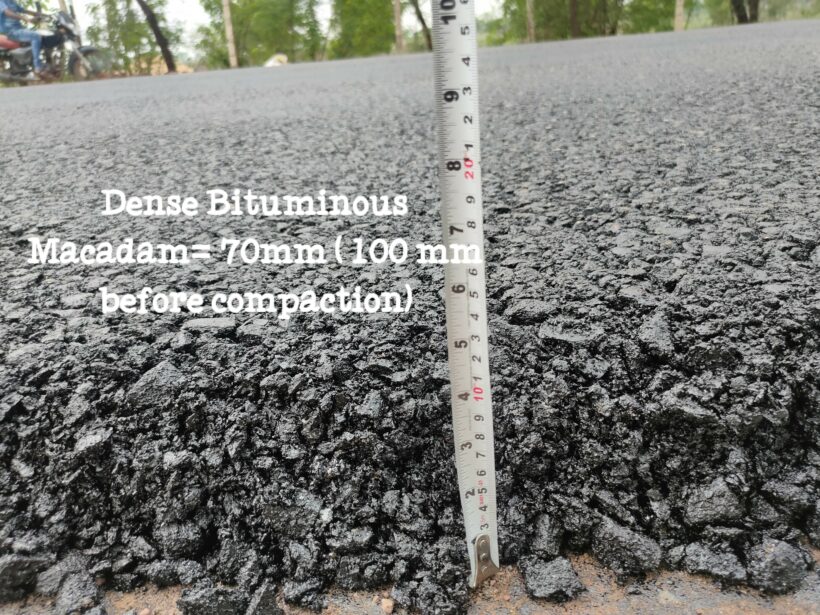Bituminous coating
The essence of civil engineering is a strong structure. It involves proper planning, excellent material choices, cost-effective construction techniques, and, most importantly, robust and durable structures that can last for years. Engineers use bituminous coatings to safeguard a structure’s durability from seepage, corrosion, or unwanted decomposition. Because of its properties, bituminous coatings are proven to be a versatile material. Let’s understand what bitumen coating is, its advantages, and its applications and types.
Understanding bituminous coating
Bituminous coating is a petroleum by-product with a high viscidity and a lubricous texture. This black substance protects the surface from corrosion and provides durability. Because of its sticky texture, civil engineers primarily use bituminous coating. It acts as an adhesive and provides outstanding waterproofing. Another essential quality of bituminous coating is its resistance to harmful UV rays and harsh chemicals.
What are the applications of bituminous coating in civil engineering?
- Water resistance: Bituminous coating is a naturally available water-resistant substance that provides impeccable waterproofing. When applied to a surface, it does not allow water or moisture to penetrate, keeping the surface away from seepage or rotting.
- Protection from corrosion: Corrosion is like a virus that can ruin any well-built structure. Metals like iron rods, pipes, fixtures, and fittings can easily catch corrosion. To make the structure corrosion-resistant, engineers use bituminous coating—the coating shields against corrosion, giving the structure durability and stability.
- Sealing gaps: Bituminous coating is an effective seal that protects the foundations from seepage. The coating fills the small openings within the material to prevent water or moisture from seeping in.
- Underground material protection: Underground construction material is mostly metal. These materials are more prone to corrosion from water and moisture. Bituminous coating provides the necessary protection for underground materials.
What are the benefits of using bituminous coating?
Bituminous coating is a beneficial petroleum by-product. Civil engineers prefer it for many advantageous reasons. Some of them are as follows:

- Water-resistant quality: Bituminous coatings provide the best water resistance. Due to their sticky texture, they stick to the surface and leave no gaps, preventing water or moisture from penetrating.
- Pocket-friendly: Bituminous coating is a pocket-friendly and efficient petroleum by-product. Engineers mostly prefer to use bituminous coating because of its cost-effectiveness.
- Long-lasting: Bituminous coatings are durable materials that offer durability to the structure. They can fight extreme weather conditions and are UV—and chemical-resistant.
- Versatility: Bituminous coating is one of the most versatile construction materials. It provides complete protection to the structure. Be it exposure to harmful chemicals, moisture or movements caused by expansion and contraction of the surface. Bituminous coating offers a safety net to the structure.
Bituminous coating protects against water and chemicals
Bituminous coatings have distinctive and hidden properties that protect structures against water, moisture, chemicals, and UV rays. These features are as follows:
- Nonpolar properties: The bituminous coating naturally resists water, freeing the structure from deterioration and seepage. It seals the small openings and prevents moisture and water from entering.
- Viscous properties: Bituminous coatings have a dense viscosity, which makes them sticky in texture. This makes them a perfect barrier against water and moisture
- Resistance to chemicals: Bituminous coatings mainly comprise hydrocarbons, which provide resistance against chemicals. They stick to the surface and act as a protective layer.
What are the types of bituminous coating?
There are three different types of bituminous coating:
- Tarmac: Tarmac is the abbreviation of tarmacadam. It is a surface material obtained by mixing crushed aggregates and molten tar. Tarmac is applied by heating it to a specific temperature and then spreading it on the surface, allowing it to harden. Once it is hard, it becomes durable and strong. It is best used for levelling driveways or roads.
- Bitumen: With its high viscosity and dense texture, bitumen is a suitable binder. It is commonly used in constructing roads, readily binding the aggregates together. Bitumen is a thick, black-coloured, semi-solid component; therefore, it is difficult to use at room temperature. So, it is heated to a specific temperature and then applied.
- Asphalt: Some people consider asphalt and bitumen the same mixing components. However, the significant difference between the two is that bitumen is a crucial component of asphalt. Asphalt is applied just like bitumen by mixing aggregates.
